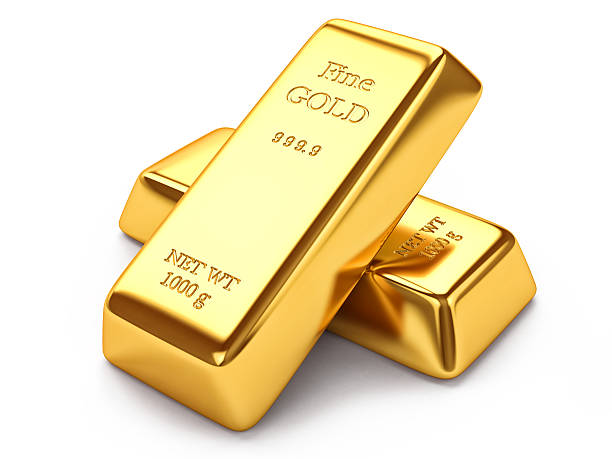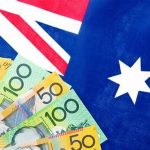Gold Struggles for Direction Near $3,300 as FOMC Minutes Loom.
The price of gold (XAUUSD) is caught in a tug of war between opposing forces early Wednesday, as it consolidates around the $3,300 mark after bouncing from a weekly low. Investors are navigating a landscape shaped by renewed US Dollar strength, cautious risk sentiment, fiscal uncertainty in the United States, and looming Federal Reserve policy signals. Against this backdrop, the precious metal lacks firm intraday direction, meandering through the Asian session in a narrow range.
Gold Treads Water in Mixed Macro Landscape
Gold prices are directionless as investors weigh conflicting macroeconomic forces. On one hand, stronger-than-expected US economic data and a rebound in consumer sentiment are buoying the US Dollar and equity markets, which typically act as a headwind for the non-yielding yellow metal. On the other, fiscal fragility in the United States and heightened geopolitical uncertainty are driving safe-haven demand, limiting gold’s downside.
The balance of risks suggests gold is consolidating ahead of key macro events, notably the Federal Open Market Committee (FOMC) Minutes due later today.
Durable Goods Orders Reveal US Manufacturing Weakness
One of the most influential macro releases on Tuesday came from the US Census Bureau, which reported that Durable Goods Orders fell 6.3% in April. While the headline figure marked a steep decline from March’s upwardly revised 7.6% increase, it still beat market expectations for a larger 7.9% drop.
Orders excluding transportation—a more stable measure of underlying demand—actually rose 0.2%, reflecting moderate resilience in non-defense capital goods spending. Still, the sharp drop in headline orders signals potential headwinds for US manufacturing activity, which could eventually feed into weaker growth and reinforce rate-cut expectations.
Consumer Confidence Surges to Highest in Four Years
In contrast to the weakening manufacturing data, US consumers appear increasingly optimistic. The Conference Board’s Consumer Confidence Index jumped sharply from 85.7 in April to 98 in May—a 12.3-point increase and the largest monthly gain in four years.
The recovery in sentiment is attributed to easing inflation pressures and optimism surrounding the US-China trade truce. These developments support household spending and economic growth, boosting risk appetite and the US Dollar. The upturn in consumer sentiment, however, limits gold’s immediate upside as safe-haven demand ebbs.
Trump Delays EU Tariffs, Market Relief Limited
President Donald Trump on Tuesday announced a delay in imposing 50% tariffs on EU imports, shifting the implementation date from June 1 to July 9. While this has temporarily soothed fears of a renewed trade war with Europe, markets remain cautious due to persistent global trade uncertainty.
The extension provides breathing room for US-EU trade talks, but the overall environment remains fraught with risk. Trump’s broader protectionist agenda, including unresolved tensions with China and threats against Mexico, continue to weigh on investor confidence and offer modest support to gold.
Fed Rate Cut Bets Remain Firm Despite Upbeat Data
Despite pockets of strength in the US economy, markets continue to price in multiple rate cuts by the Federal Reserve in 2025. Traders are currently factoring in at least two 25 basis-point cuts, reflecting expectations that the Fed will pivot to an accommodative stance to counter fiscal instability and soft inflation.
Recent data have shown moderating price pressures, and the Fed’s preferred inflation gauge—the PCE Price Index—is due later this week. A weaker-than-expected reading could further entrench dovish expectations and underpin gold prices.
Trump’s Fiscal Push Risks Widening US Deficit
Another key driver for gold is the fiscal trajectory of the United States. President Trump’s proposed “Big, Beautiful Bill,” a sweeping infrastructure and social spending package, is expected to significantly worsen the federal budget deficit if passed in the Senate.
The prospect of ballooning deficits undermines confidence in US fiscal sustainability and raises concerns about the long-term strength of the US Dollar. For gold—a store of value and inflation hedge—such concerns are a long-term tailwind.
Geopolitical Risks Simmer on Multiple Fronts
Geopolitical risk remains a constant undercurrent supporting gold demand. Tensions between Russia and Ukraine flared anew this week, following Russia’s deadliest missile and drone strikes since the 2022 invasion. In response, Trump warned that Russian President Vladimir Putin was “playing with fire” by refusing to engage in ceasefire talks.
Simultaneously, the Middle East remains tense after Israeli officials rejected reports that Hamas had accepted a new Gaza ceasefire proposal. With diplomatic efforts stalled, the region remains a hotbed of volatility that continues to drive defensive asset flows into gold.
FOMC Minutes to Shape Short-Term Gold Trajectory
The market’s next major catalyst is the release of the FOMC Minutes later today, which will shed light on policymakers’ internal deliberations at the May meeting. Traders are eager to see whether there is growing consensus around rate cuts or if hawkish voices still dominate.
Given the delicate macro balance—resilient growth but benign inflation—the tone of the minutes could significantly sway both USD sentiment and gold pricing. A dovish tilt would likely push real yields lower and support XAU/USD, while a hawkish surprise may pressure the metal toward its weekly low near $3,280.
Upcoming Data Could Amplify Volatility
Beyond the FOMC Minutes, gold traders are closely eyeing two major data releases later this week:
- Q1 GDP (Preliminary) – Scheduled for Thursday, the release will offer a refined look at early-year US economic momentum. A strong upward revision could delay rate-cut expectations and weigh on gold.
- Core PCE Price Index – Due Friday, this is the Fed’s preferred inflation gauge. If price growth continues to cool, it will reinforce the case for monetary easing, lending support to gold.
The dual impact of growth and inflation data, alongside Fed commentary, could push gold decisively out of its current $3,280–$3,320 range.
Technical Analysis: Gold Needs a Breakout for Momentum
From a technical standpoint, gold’s price action suggests indecision. Immediate support lies around the weekly low of $3,280, followed by stronger demand near $3,250. On the upside, resistance sits around the $3,320–$3,330 area, where sellers have capped price action this week.
A decisive move beyond either boundary, particularly post-FOMC, could define the next short-term trend. Momentum indicators like the Relative Strength Index (RSI) remain neutral, underscoring the wait-and-see market sentiment.
Conclusion: Gold in Holding Pattern Ahead of Key Events
The gold market is in a temporary holding pattern as investors await clarity from the Fed and fresh economic signals. While upbeat US data and improved consumer confidence buoy the Dollar, underlying risks—ranging from geopolitics to fiscal instability—continue to support safe-haven flows.
Whether gold breaks higher or lower in the near term will depend heavily on the FOMC Minutes and the trajectory of inflation data. Until then, price action is likely to remain choppy and headline-driven.
[faq-schema id=”39694″]









